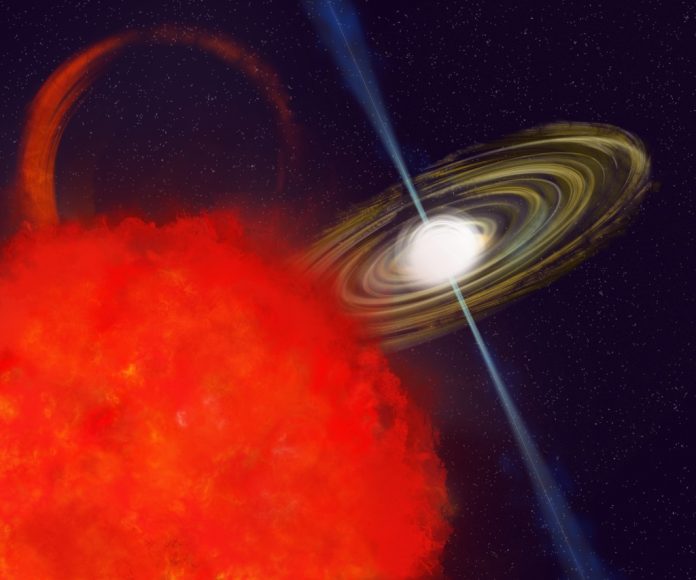
Astronomers have found a strange and fascinating object in space that may change what we know about stars.
Named CHIME J1634+44, this object gives off powerful radio signals in ways scientists have never seen before.
It’s part of a newly discovered group of space objects called Long Period Radio Transients (LPTs), which rotate very slowly—sometimes taking minutes or even hours to complete a turn.
What makes CHIME J1634+44 truly unusual is that it appears to be spinning faster over time.
That’s surprising, because most stars like neutron stars or white dwarfs normally slow down as they age. In this case, the object’s spin period is actually getting shorter, which suggests it’s speeding up—a phenomenon never seen before in LPTs.
The discovery was led by Fengqiu Adam Dong, a Jansky Fellow at the U.S. National Science Foundation’s Green Bank Observatory.
Dong and his team used some of the most powerful radio telescopes in the world to study this mystery, including the Green Bank Telescope (NSF GBT), the Very Large Array (NSF VLA), and the Canadian CHIME radio telescope. NASA’s Neil Gehrels Swift Observatory also helped by checking for X-ray signals.
CHIME J1634+44 sends out repeated radio bursts, but not at perfectly regular times.
Sometimes the bursts repeat every 14 minutes, and other times there is a separate cycle lasting 70 minutes.
Scientists believe these patterns could mean that something is orbiting around the main object—possibly another star—suggesting it could be a close binary system.
This strange object also emits radio waves that are 100% circularly polarized. That means the radio waves twist in a perfect spiral shape as they move through space, something extremely rare and not seen in any other known neutron star or white dwarf.
This strange signal suggests that the way CHIME J1634+44 produces radio waves may be unlike anything scientists have seen before.
The research team thinks the changing spin rate might be caused by two stars orbiting each other so closely that they are losing energy—possibly by giving off gravitational waves—causing their orbit to shrink. This could explain why the main object appears to be spinning faster.
Because this object behaves so differently from any other LPT, Dong calls it a “unicorn.” It’s one of a kind—for now. Scientists believe there may be many more such mysterious objects out there, waiting to be discovered.
This discovery pushes the boundaries of what we know about stars and may help unlock more secrets of the universe.



